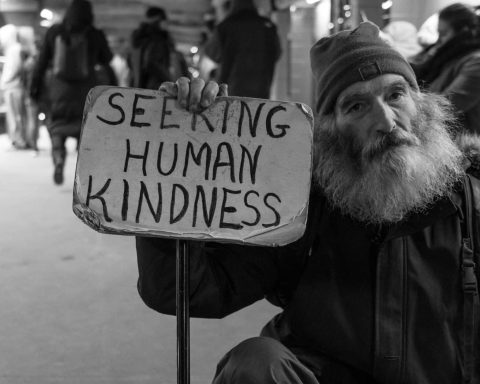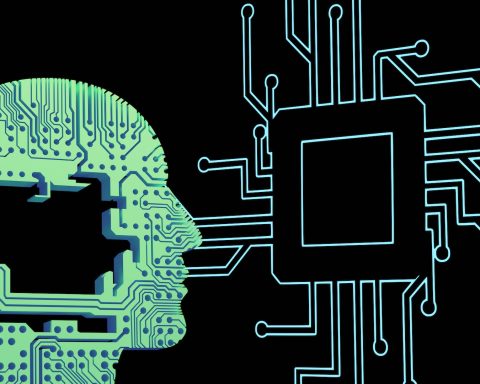 Austin O’Carroll is a general practitioner and co-founder of Safetynet Ireland, North Dublin City GP Training, and GPCareForAll. He is on twitter: @austinoc_austin
Austin O’Carroll is a general practitioner and co-founder of Safetynet Ireland, North Dublin City GP Training, and GPCareForAll. He is on twitter: @austinoc_austin
The “triple f**k disorder” describes a triple interlocking societal oppression where medicine holds the key for the final padlock. The first f**k occurs by exposing children to trauma caused by poverty; the second is created by blaming those children as they grow into adults for displaying behaviours caused by that trauma; and the final f**k is the pseudo-scientific medical construct of personality disorder (PD). This final f**k belongs to the cruellest of oppressions, as it robs the victim of both their core existential selves and the one factor that could allow them to resist oppression: the social perception of their sanity. This article argues, firstly, that PD is a confused and confusing medical construct that has no demonstrable pathological disease basis; secondly, that the behaviours associated with both borderline and antisocial PDs (BPD & ASPD) may not be caused not by internal dysfunction but just as plausibly by the effects of childhood adversity and poverty; and thirdly, that the diagnosis of PD is harmful to the health of those so labelled.
1. Personality disorder is a nebulous illness and arguably not a disease at all
“Diseases exist when underlying natural pathological processes produce particular sets of symptoms”.1 These pathologies are identified pre-mortem using scans, microscopes, or laboratory evaluation of blood or other bodily fluids; or post-mortem on the mortuary slab. Many, if not most, psychiatric diagnoses are based on symptoms and have no identifiable pathology.
The diagnostic criteria for PD are nebulous. Aside from the uncommon PD post brain-injury, there is no proven pathology associated with any PD variants. The diagnosis is often made without complaint of distress or malaise by the patient. The physician must identify a combination of vague, difficult-to-define, cognitive and emotional social constructs (e.g. markedly impoverished self-identity/deceitfulness/interpersonal hypersensitivity/manipulativeness/instability in goals, aspirations, values or career plans/callousness) that depend on subjective evaluation and lack any element of objectivity required by a scientific-based discipline. There are a total of 256 combinations of the criteria for diagnosing BPD implying that two people can be diagnosed with BPD while sharing only one behavioural criteria.2 The criteria for differing PD and other mental illnesses overlap to the extent that most of those with a diagnosis of PD could also be diagnosed with an alternate PD or mental illness.3 Yet the diagnosis is made in between 5-13% of people in Western Countries.3
2. The behavioural features of personality disorder are most strongly related to childhood trauma and poverty and not internal aberration
Low socio-economic status and child adversity are the two strongest associations with having a BPD/ASPD diagnosis. This is not surprising as the behaviours that are central to a BPD/ASPD ‘diagnosis’ are independently associated with coming from a background of poverty or childhood trauma (e.g. childhood behavioural and emotional difficulties, criminal, violent or addictive behaviours). There is a director correlation between both socio-economic status and number of adverse childhood events with the severity of PD symptoms/behaviours. Unsurprisingly, a reduction in social stressors leads to a diminution of the features of PD. As people coming from poverty are much more likely to have experienced childhood adversity than their affluent counterparts, in fact, it is difficult to disentangle these two factors.4,5
Shifting the causation from socio-economic status/childhood adversity to personal fallibility feeds an unjust blame attribution to the individual affected. At the very least this excuses society from any duty to help those who cannot be helped and labels people as ‘faulty’ rather than ‘damaged.’
3. The diagnosis of PD is harmful to health of those diagnosed
It has been argued that by framing behaviours, such as those found in PD, as mental illnesses, we reduce the stigma and open up therapeutic as opposed to punitive societal mechanisms for their management. By contrast, Lebowitz and Woo-kyoung (2014) argue: ‘biological accounts of psychopathology can exacerbate perceptions of patients as abnormal, distinct from the rest of the population, meriting social exclusion, and even less than fully human’.6
A more sinister interpretation of the PD construct is it that it represents the medically institutionalised oppression of marginalised people and of women.
The social stigma of PD is intensified within health services. Veysey (2011) elicited that those diagnosed with BPD were viewed as “liars; attention-seeking; unreasonable/difficult; manipulative; a waste of time/hopeless (particularly as they did not/could not get better); too hard to deal with, and were taking resources from other patients.”2 This stigma results in patients being excluded from healthcare or if they gain entry they obtain substandard clinical care.2,7 Patients who self-harm report not being taken seriously while doctors describe them as being manipulative. This is despite the high rates of eventual suicide (6-10%) in this population.2
A more sinister interpretation of the PD construct is it that it represents the medically institutionalised oppression of marginalised people and of women. Feminist critics have described the label of BPD as misogynistic. Becker (2000) describes BPD as “little more than shorthand for a difficult, angry female client”.8
PD could also be added to the list of descriptors for “Difficult Patient Hatred”, including heartsink, manipulative, wilful and attention-seeking patients.9 Koekkoek et al (2006) found that PD was mentioned four times more than any other diagnosis when doctors discussed difficult patients.9 It is reported that PD is much more common in patients who attend doctors ranging from 30% in general practice to 70% in psychiatric outpatients departments.3 It is possible that this higher prevalence is related to doctors likelihood to make to label patients they find difficult as PD. Meeting doctors may be bad for one’s health.
In conclusion
The perverse injustice that lies at the heart of the triple f**k argument is that when we apply the term PD, it is as if we denigrate the person’s core existential self. The person is converted from a complex interwoven matrix of thoughts, feelings, experiences, beliefs and relationships into a medically-dehumanised category that no person would like applied to themselves or their loved ones. This is the process of dehumanisation.2 Rather than using the label “social inequity disorder” or “poverty disorder”, we actually nail the responsibility for these behaviours right to the core personality. Labels matter when they attribute or remove blame. A perverse outcome of this labelling is that we deflect society’s attention from the most likely causes for these behaviours, including the effects of trauma, sexism and social inequity.1 As Kelly (2018) notes, “focussing blame individually is a moral diversion from morally and causally relevant factors”.10
What is the alternative? It is simple. Firstly, we must recognise that childhood adversity and poverty have profound effects on adults’ emotional and behavioural expression. I would additionally suggest we ditch the label ‘personality disorder’. If we need a label to focus support and treatment, let us label the symptoms and their cause e.g. behavioural disturbance resulting from childhood trauma, emotional disturbance arising from childhood poverty etc. Secondly, we must provide the affected people with whatever supports we have (social, therapeutic or medical), to enable them to live healthier and more fulfilling lives. Finally, we must seek to reduce the risk of children having to experience poverty or adversity, thus increasing their chances of having a happy and healthy life. This is the triple action plan.
References
1. Wirth-Cauchon J, Horwitz A V. Creating Mental Illness. Contemp Sociol. 2002;
2. Veysey S. Look at the human being in front of you who’s hurting: Clients with a borderline personality disorder diagnosis describe their experiences of discriminatory and helpful behaviour from health professionals. New Zealand; 2011.
3. Kim YR, Tyrer P. Controversies surrounding classification of personality disorder. Psychiatry Investigation. 2010.
4. Cohen P, Chen H, Gordon K, Johnson J, Brook J, Kasen S. Socioeconomic background and the developmental course of schizotypal and borderline personality disorder symptoms. Dev Psychopathol. 2008
5. Kulacaoglu, Filiz, and Samet Kose. 2018. “Borderline Personality Disorder (BPD): In the Midst of Vulnerability, Chaos, and Awe.” Brain Sciences. https://doi.org/10.3390/brainsci8110201
6. Lebowitz MS, Ahn WK. Effects of biological explanations for mental disorders on clinicians’ empathy. Proc Natl Acad Sci U S A. 2014;
7. Aviram RB, Brodsky BS, Stanley B. Borderline personality disorder, stigma, and treatment implications. Harvard Review of Psychiatry. 2006.
8. Becker D. When she was bad: Borderline personality disorder in a posttraumatic age. American Journal of Orthopsychiatry. 2000.
9. Koekkoek B, van Meijel B, Hutschemaekers G. “Difficult Patients” in Mental Health Care: A Review. Psychiatr Serv. 2006;
10. Kelly EI. The Limits of Blame: Rethinking Punishment and Responsibility. Harvard University Press; 2018.







Now please consider the very profound negative effects on future health and development associated with severe ‘Birth Trauma/ Injury’.
Rising rates of Autism and related neurodevelopmental disability in this generation of children. Another very evident ‘Negative’ reflection back on a very flawed ‘Failed Health System’, that is structured and operates in such a way as to serve the interests of the Medical personnel and Hospital , before the interests and safety of the expectant mother and infant .
An excellent presentation and appreciation of PD and potential pathway to address same. How do you widen the discourse and engage key stakeholder in the movement?
June
I have sympathy for your article but you say trauma is caused by poverty but children can also be traumatised in families in all socio economic brackets. What’s your explanation for that ? Parents with neurodevelopmental problems NDD (linked partially to poverty) are more likely to abuse their children who also are more likely to experience NDD’s. Moreover, Which personality disorders are basically complex trauma? Our study of twins showed psychopathic traits are not linked to trauma. More nuance and causal complexity is needed in these discussions. These are multifactorial problems. NDD’s won’t go away if poverty was (rightly) eliminated.
I think first thing is to circulate as widely as possible. I believe same as with other stigmatizing language we need to stop using this term. I am conflicted whether we should just dump the whole concept or rename it with a more apt name (e.g. a term that recognises these behaviours and emotions derive from trauma). That is the discussion we need to have
Hi John, I think that firstly, personality disorder is a medical construction. We have grouped together a series of vague (subjectively assessed) features and applied a term to it. Once you have a construction (as opposed to a clear real entity) the concept of causation becomes problematic. I am critical realist as opposed to positivist, so I think in terms of tendencies when it comes to causation rather than conjunctivist causation. Both Trauma and Poverty tend to be associated with this construction of PD. So my reading is that trauma often results in people having the behaviours and emotions described in the construct of PD. Of course poverty results in much higher levels of trauma so by default will be associated with the construct of PD. I accept that trauma can have neurodevelopmental effects – again part of the web of tendencies involved in causation. This interpretation is similar to the idea of multi-factorial causation – where it differs is that I do not think there is a real entity being ’caused;. It still is a medical construct – and a dangerous one.
The points made in this interesting opinion piece will be familiar to clinicians who work in services for patients with personality related problems (I am a forensic psychiatrist) but there are additional points to consider:
1. All psychiatric diagnoses are syndromal. There is no identifiable pathognomonic biological abnormality that confirms diagnosis for any of the major conditions, including schizophrenia, bipolar disorder, ptsd etc. In this respect personality disorders are no different from other psychiatric conditions.
2. Almost all psychiatric disorders are found in excess where there is a background of poverty/neglect/abuse. The case of personality disorder is also not unique in this respect.
3. It would be a mistake to conclude that the poverty etc is the actual cause of the disorder in adulthood. We don’t know that for sure and for this reason it would be wrong to change the diagnostic labels in the way the author suggests. That has already been done in the case of what is called complex ptsd – which is a condition that overlaps substantially with borderline personality disorder – but this remains a controversial issue among clinicians and scientists working on the field. The problem is that putting a putative cause into the diagnostic label goes beyond our scientific knowledge and oversimplifies matters.
4. The author does not cite studies that identify biological and psychological anomalies associated with personality disorders such as in the case of severe antisocial personality disorder, suggestive of some biological underpinning. Also there is much published evidence that treatment works – especially for borderline personality disorder.
5. These may be some of the reasons why we have held on to the personality disorder diagnosis – but it is not an elegant term. It is also true that medical subcategories of personality disorder are not defined by the psychological studies which have categorised the core personality traits and personality types.
It is only a matter of time before the labels used to categorise personality related problems catche up with the science – the latest version of ICD already incorporates some of these changes.
On the point of relabelling medical problems as poverty derived conditions, this could apply to all manner of medical problems (obesity, certain cancers etc) or behaviours (criminal behaviour, drug abuse) but such relabelling would oversimplify causal connections and may be as flawed as traditional medical approaches to diagnosis.
Yes, I think the renaming of Personality Disorders is long overdue.The link between describing a syndrome, and attributing it as part of someone’s core identity, is stigmatising and fatalistic, and needs to be broken. But we need to find a label that recognises the fact these conditions represent a multifactorial syndrome, not one that necessarily tries to attribute a specific cause. If anything, the closest we might get to aetiology might be to link them to difficulties of attachment and in the experiences of forming relationships. I think a lot of work is needed to define this cluster of problems more clearly, but it really should take into account the importance of language to the people whose experiences are being described.
Hi – thanks for your comment.
Firstly, I agree many psychiatric diagnoses are not based on a pathological condition i.e. they are not diseases.
Secondly, psychiatry does tend to revert to a ‘biological’ explanation. I am skeptical of this alternative as it still implies some form of pathology which we are agreed does not exist. I tend to think many in psychiatry believe biological implies pathological – it does not. In essence all emotional states have involve a biological, genetic and biochemical basis (sadness, happiness, anger, fear, anxiety). Similarly, (but to a lesser extent) behaviours involve biological, genetic and biochemical processes. Of course environmental factors also influence emotions and behaviours. So if all behaviours and emotions involve ‘multi-factorial’ issues why do we label it a disorder. We need to be clear with patients it is not a ‘pathology’ or a ‘disease’. (I think psychiatry fails to address this generally – as do GPs with e.g. risk factors). The only time I can see the use of a label of disorder is if it results in a significant benefit to the patient. This is where PD fails as the evidence is not clear it provides a benefit, and it is clear that the diagnosis causes significant harm. Therefore we should dispense with the label.
Thirdly, many psych conditions are associated with poverty. This is not surprising really as why would you not be more likely to be stressed, anxious, worrying, sad, unhappy etc. if you lived in areas of deprivation. To say that poverty is not causative depends on how you view causation. If we agree that PD is not a disease, then it is a medical/social construction. You cannot cause a construction as defined by positivist philosophy (as you cannot cause something that is not ‘real’. Critical realism sees more complex causation that straddles social constructionism and realism where causation is about tendances and also in terms of best fit explanations– there is a tendency for people in poverty to be diagnosed with more psych conditions and the best fit explanation is that it is a generative mechanism (critical realist term) for such constructions.
Lastly, I did not suggest that the labels be ascribed to poverty. Personally, I would prefer ditching the label. But if we are going to create labels let us then use a label that indicates the most likely association. We have dumped the label illegitimate child and replaced it with ‘child of unmarried parents’ as it places the issue with the parents (not that there is any issue but if there is it should not be placed on the child). Ascribing smoking (related to social inequality) is not a bad idea as it might stop some of those personal responsibility physicians adopting righteous undertones .
ATB
Excellent article, may we also add that PD diagnosis is automatically applied to patients who self-harm regardless of fitting any other criteria, this facilitates punitive treatment in Emergency Departments such as witholding local anaesthetic through to refusal of treatment (even grafts by plastics for 3rd degree burns). It’s clinically sloppy to diagnose people who self-harm with PD simply because BPD is the only diagnosis which lists self-harm as part of symptom criteria because people across the entire diagnostic spectrum self-harm. Self-harm and repeated suicide attempts have always been medicines archilles heel, but the PD diagnosis is the key way in which people are ‘othered’. Punitive responses never ever make a positive difference, they create a negative feedback loop, and escalate harm. PD diagnosis is also widely used now when people fail to ‘recover’ from any mental illness, PD has replaced chronic, so that services can be withdrawn on grounds of ‘dependency’ or ‘treatability’, it covers up cuts to services meaning most people are processed and discharged asap. PD diagnosis is used to mark out patients who are disliked, viewed as non-compliant, not responding to medication or behavioural interventions, and to expedite discharge and refusal from further access. There is clearly a misogynist element to BPD with survivors of CSA, DV, adult rape, often suffering the most within services. PD has even been used against whistleblowers, it is the most effective savage medical insult. A starting point might be to remove the self-harm criteria, and to stop covering up service cuts and acknowledge some people need long term support because they have enduring experience. Ultimately it would be good to see the entire diagnostic category removed but much is invested in that industry, but it helps every time doctors speak out and refuse to use the diagnosis.
Thank you Austin for an extremely thought provoking article and one that hopefully gives all involved in healthcare ‘pause for thought’. I have long felt that Personality Disorder diagnosis is simply a term that describes maladaptive coping behaviors stemming from often a high ‘ACE’s’ (adverse childhood events) score. Childhood trauma, as we know in the literature, leads to much higher rates of mental health diseases and chronic medical conditions in later life. I often see the behaviors playing out in patient’s labelled as Personality disorders of those who had an ‘insecure attachment’ with their primary carer/s. They therefore never developed that ability to co-regulate with ‘other’ by having their needs attended to and met. Their nervous system is then left in a chronic state of ‘fight flight’, taking very little to trigger same, presenting time and time again in high ‘distress’ states/ ‘fight flight’/ sympathetic activation. They are often looking for the ‘carer’/ doctor’ to provide that nervous system regulation that was missing early in life. I feel that so much more needs to be done to provide ‘Trauma informed’ care ie. educate all healthcare workers and medics about how trauma presents so that the underlying drivers of these very distressing behaviours can be addressed.
Thank you for this article- it is really great to be able to discuss this issue, which is a daily one for me, having worked as a GP in an area of deprivation for the last 18years.
I totally agree that the label of ‘personality disorder’ is stigmatising and frankly insulting as a term, but I do not feel removing the diagnosis altogether would be beneficial for all. Many of my patients, and those who are close to them, are actively looking for an explanation for ‘what is wrong’ with them, as they are fully aware their emotions and behaviours are not typical, or helpful to them. What I think is needed though is an explanation which will help them understand, and begin to be empowered to learn to manage the issues, starting with a name which is what you might call a ‘handle’ or even a ‘key’ rather than a ‘label’- something which helps them understand what has happened to them, what this has caused, and how it can be tackled.
And at the same time as using this to inform sufferers we also need to educate health care staff as to what the label of ‘personality disorder’ actually represents in terms of someone’s life experiences.
Although this article, and the comments, are a great beginning, what really interests me is the subject of how to help and what works for people who have this distressing and destructive set of behaviours.
I have always see personality disorders as a survival strategy that patients outgrow because it was put in place by a small child and is never going to see them through adulthood. The label has always grated for me, but lots of patient like a label. I prefer Personality Adaption if you have to call it something.